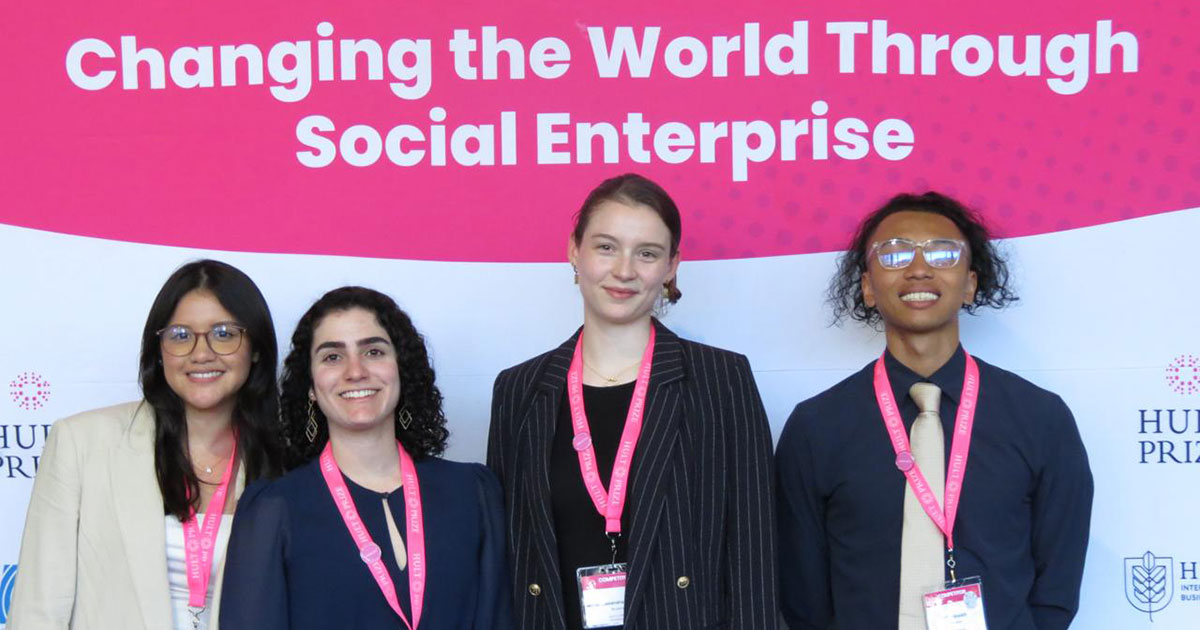New GEM Report Recommends Action to Support Women Entrepreneurs

Women continue to make major strides in entrepreneurship but need more support from policymakers and program leaders, according to a new report from the Global Entrepreneurship Monitor (GEM).
The new GEM 2021/2022 Women’s Entrepreneurship Report—released November 18 and authored by Amanda Elam, research fellow at the Diana International Research Institute at Babson College—illustrates the state of women’s entrepreneurship two years after the onset of the COVID-19 pandemic. The report found that startup rates for women dropped by 15% from 2019 to 2020, but held constant in 2021.
The report also highlighted gender differences in entrepreneurial intentions. Women experienced sharper declines than men in their intentions to start a business within three years and overall startup rates in 2020, but not in upper middle-income countries.
“Women represent two out of every five early-stage entrepreneurs,” Elam said. “Entrepreneurship is a part of the economy where women are continuing to take an active role. It’s important for educators, leaders, and policymakers to understand the drivers of gender differences in this critical market activity.”
Focused on Solutions
GEM, a global consortium of academic researchers co-founded by Babson College in 1999, studies entrepreneurial motivation and activity around the world. Its latest report sheds light on the actions that policymakers and others should take to support women entrepreneurs.
The report highlights the gender composition of high-potential startup populations, pandemic impacts on male and female entrepreneurs, and structural and environmental inequalities that need to be addressed on a policy level.
“Entrepreneurship is a part of the economy where women are continuing to take an active role. It’s important for educators, leaders, and policymakers to understand the drivers of gender differences in this critical market activity.”
Amanda Elam, research fellow at the Diana International Research Institute at Babson College
“GEM is the only global research source that collects data on entrepreneurship directly from the source—entrepreneurs,” GEM Executive Director Aileen Ionescu-Somers said. “Applying a well-informed gender lens to the evidence points policymakers and program leaders toward more effective tailor-made solutions to address the barriers to business startup and growth for women entrepreneurs.”
The report provided guidance for policymakers and program leaders to help address the barriers to business startup and growth for women entrepreneurs:
- Because women entrepreneurs are underrepresented in traditionally male-dominated sectors, policymakers can provide support to women entrepreneurs equally in all sectors and countries, especially in male-dominated sectors where negative stereotypes are triggered.
- Because women represent one in three high-potential entrepreneurs, policy programming is needed to mobilize financing and other support toward the sectors where women are currently active.
- As academic research suggests that women are just as likely as men to succeed when starting similar businesses in comparable industry sectors, structural barriers can be more directly addressed to debunk negative stereotypes about women entrepreneurs.
- National experts taking part in the research agree that there is currently little cultural support for female entrepreneurs. It is important to celebrate and promote successful women founders as role models.
More Key Findings
According to the GEM report’s executive summary, women around the world “represent about one in three high-growth entrepreneurs and one in three innovation entrepreneurs focused on national and international markets.”
The report’s findings—based on a trend analysis of women’s entrepreneurship across 50 countries from GEM 2021–2022 data—also illustrated the importance of a strong environment to support entrepreneurial intentions among women. Women in upper middle-income countries represent some of the most innovative, high-growth entrepreneurs in the world, at parity with men for international market focus.
Countries with the highest expert ratings also saw the highest levels of entrepreneurial intentions. However, national experts generally rated the enabling environment for women entrepreneurs very poorly in most countries, which may explain why women have a slightly lower perception of entrepreneurship as a career choice compared to men.
Other key findings from the report include:
- Business exit rates for women rose from 2.9% to 3.6% over the two-year pandemic period, in contrast to the higher rates for men (3.5% to 4.4%). Women in upper middle-income countries showed the largest pandemic impact on business exit with a 74% increase from 2019 to 2021, compared with 34% for men.
- Almost half of women entrepreneurs worldwide are involved in the wholesale/retail sector and one in five women entrepreneurs in the government and social services sector (18.5% women vs. 10.1% men). However, only 2.7% of women compared with 4.7% of men are starting businesses in information, computers, and technology (ICT), the sector that draws the majority of venture capital dollars worldwide.
- In every country surveyed, women were much less active in business than men and tended to make much smaller related investments. The most significant gender differences were found in lower-income countries, while women in upper middle-income countries were closest to gender parity.



